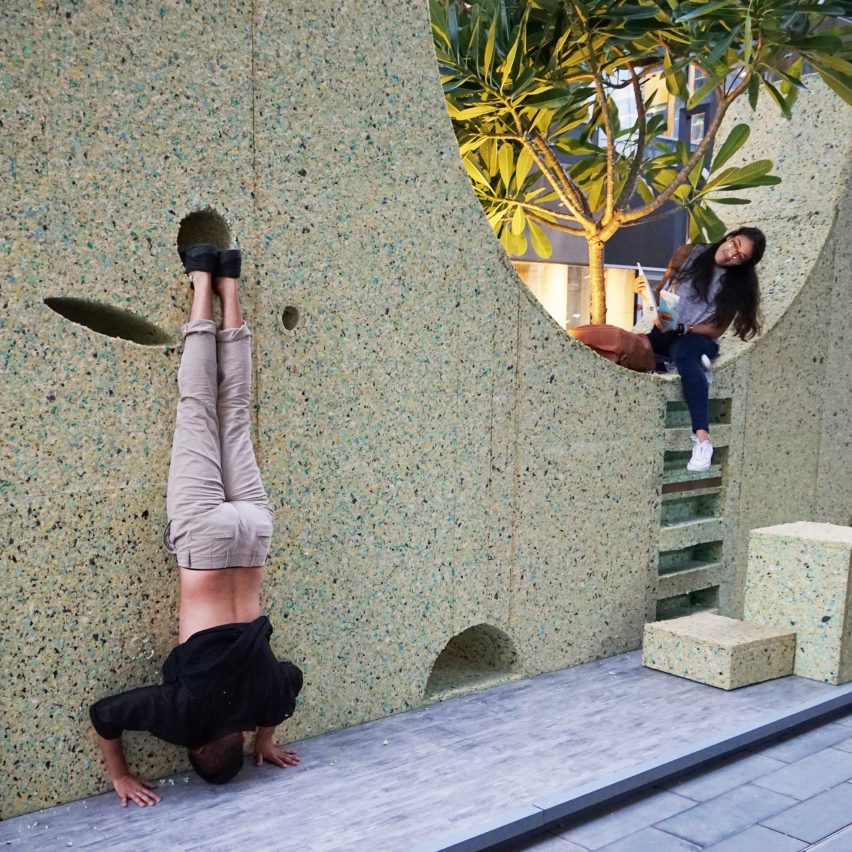T Sakhi's Lebanon pavilion uses walls to activate social interaction

Beirut studio T Sakhi redefined the wall as a hub for social connection with its pavilion for Dubai Design Week, which comments on the "resilience" of Lebanese society in the face of current socio-political unrest.
Sisters Tessa and Tara Sakhi from architecture and design studio T Sakhi were commissioned to create a pavilion for this year's edition of Dubai Design Week that would represent their Lebanese culture.
The result is the WAL(L)TZ installation ? a 15-metre linear wall made from recyclable foam that has been penetrated with various openings and cracks that visitors can use to communicate with one another.
As the designers explain, each visitor becomes a performer in a "choreographed protest" against oppression when interacting with the wall and other people through it. Tessa and Tara describe this as a "reinterpreted waltz", which gives the pavilion its name. "It is all a question of how much you want to push yourself to go to the other side of the wall," they said.
While WAL(L)TZ directly addresses the ongoing uprising in Lebanon, it also speaks more universally to the barriers faced by our current generation, the designers explained, which is dominated by technology.
The concept was born in response to the questions the Sakhi sisters found themselves asking, such as "How do we interact in today's world"" and "Are we intimate strangers""
Placing iPads and mirrors in some of the holes was the ...
| -------------------------------- |
| Frame City by Fernando Donis | Redesign the World | Dezeen |
|
|
Villa M by Pierattelli Architetture Modernizes 1950s Florence Estate
31-10-2024 07:22 - (
Architecture )
Kent Avenue Penthouse Merges Industrial and Minimalist Styles
31-10-2024 07:22 - (
Architecture )






